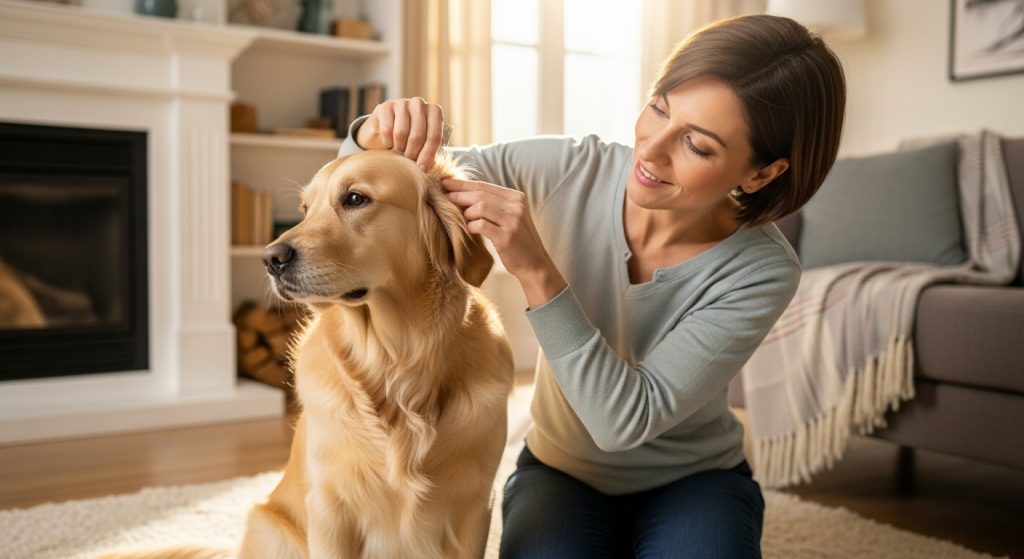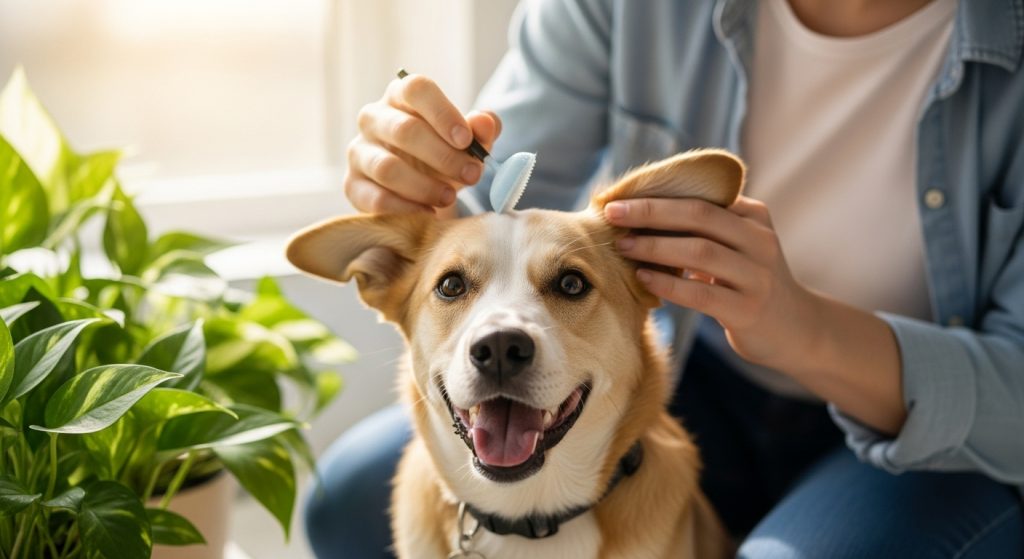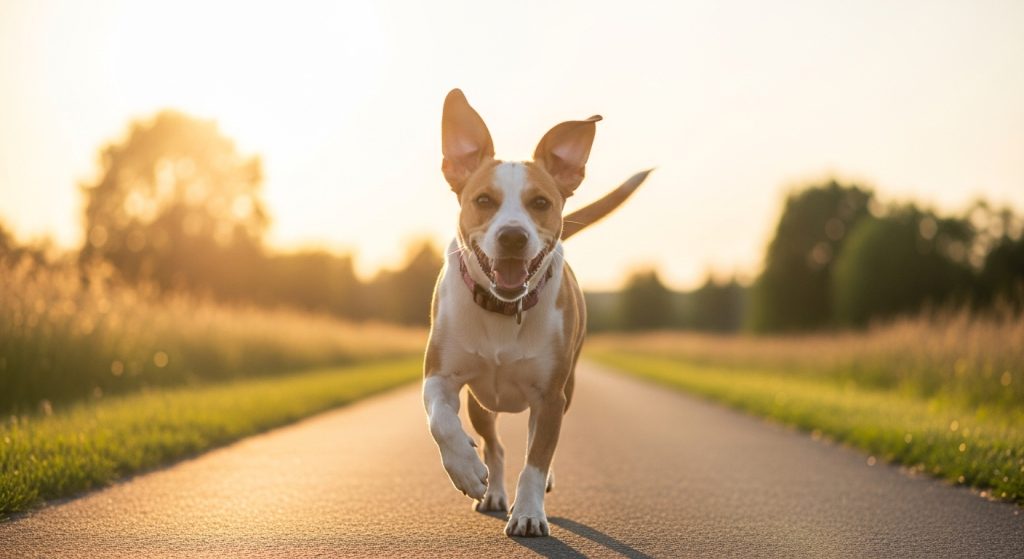If your dog keeps scratching their ears, shaking their head, or you notice an unpleasant odor, chances are your furry friend is dealing with an ear infection. Dog ear infections are one of the most common issues veterinarians see, especially in breeds with floppy ears or allergies.
While medication from your vet is often necessary, there’s a lot you can do at home to prevent and treat common dog ear infections naturally and effectively. This guide explains everything you need to know — what causes ear infections, how to recognize the signs early, and the best preventive and treatment strategies for long-term ear health.
Understanding Dog Ear Infections
What Causes Dog Ear Infections?
Dog ear infections (otitis externa) usually occur when bacteria or yeast overgrow inside the ear canal. The infection can also be triggered or worsened by:
-
Moisture and humidity (after swimming or bathing)
-
Allergies (food or environmental)
-
Excessive wax or debris buildup
-
Parasites such as ear mites
-
Injury or scratching that damages ear tissue
Dogs with floppy or hairy ears like Cocker Spaniels, Labradors, and Golden Retrievers are more prone because moisture gets trapped inside their ears.
Common Symptoms to Watch For
Recognizing early signs of infection can prevent serious discomfort for your dog. Symptoms include:
-
Constant ear scratching or head shaking
-
Redness or swelling inside the ear
-
Foul odor or dark discharge
-
Sensitivity when touching the ear
-
Loss of balance or tilting the head
If your dog shows these symptoms, visit your veterinarian. Ignoring the issue can lead to chronic infections or even hearing loss.
Why Prevention Is Key
Preventing ear infections is much easier than treating them. A clean, dry, and balanced ear environment discourages bacteria and yeast from multiplying. Natural cleaning, regular checks, and balanced nutrition can go a long way in protecting your dog’s ear health.
Natural Prevention for Healthy Dog Ears
1. Keep the Ears Clean and Dry
Moisture is the number one enemy of ear health. After swimming or bathing, gently dry your dog’s ears using a clean, soft cloth. Avoid inserting cotton swabs deep into the ear canal, as this can push debris further in.
You can use a natural ear-cleaning solution made from equal parts apple cider vinegar and distilled water. It helps kill yeast and bacteria naturally. Gently apply a few drops, massage the base of the ear, and wipe away any excess liquid.
2. Regular Grooming and Hair Trimming
For dogs with hairy ear canals, keeping hair trimmed helps air circulation and prevents moisture buildup. Regular grooming around the ear area also helps you spot redness or discharge early.
3. Balanced Diet and Supplements
A healthy diet boosts your dog’s immune system, making it less likely to develop ear infections. Add these natural nutrients to your dog’s meals:
-
Omega-3 fatty acids (fish oil): reduces inflammation
-
Probiotics: supports gut and immune health
-
Vitamin E and Zinc: promotes skin and ear tissue repair
4. Manage Allergies
Allergies often trigger ear inflammation. Identify potential food or environmental allergens and work with your vet to adjust your dog’s diet. A limited-ingredient diet with high-quality proteins can significantly reduce ear irritation.
5. Regular Ear Checks
Check your dog’s ears weekly for redness, odor, or wax buildup. If you notice any discharge or swelling, clean gently or contact your vet. Consistent monitoring ensures small problems don’t become big ones.
Treating Dog Ear Infections Effectively
Step 1: Visit the Veterinarian
If your dog’s ears are painful, swollen, or producing dark discharge, professional treatment is needed. The vet will examine the ear canal, possibly take a swab for lab testing, and prescribe the appropriate treatment — usually antibiotic or antifungal ear drops.
Do not try to treat a severe infection at home without diagnosis. Some infections may involve ear mites or ruptured eardrums, which require specific medical care.
Step 2: Natural Home Remedies for Mild Cases
For mild or recurring ear irritation, you can use gentle natural remedies after consulting your vet:
-
Coconut oil: Apply a few drops to soothe inflammation and kill yeast
-
Aloe vera gel: Natural anti-inflammatory, cooling effect
-
Calendula oil: Known for antibacterial and healing properties
-
Green tea rinse: Acts as a mild antiseptic and relieves itching
Always patch-test first and stop immediately if irritation occurs.
Step 3: Maintain Long-Term Ear Health
After your dog recovers, continue regular ear cleaning, balanced diet, and exercise. Keep your pet’s environment dry and clean, and schedule periodic vet checkups.
Remember, prevention and early detection are the best forms of treatment. By paying attention to your dog’s ear health, you can prevent infections from becoming painful and chronic.
Step 4: Watch for Recurrence
Even after treatment, monitor your dog for signs of relapse — scratching, odor, or shaking the head. Chronic infections often mean an underlying cause like allergies, mites, or hormonal imbalance that needs to be addressed holistically.
Dog ear infections are uncomfortable but completely manageable. With consistent care, natural prevention, and timely treatment, your dog can stay infection-free and happy.
Healthy ears mean a happy, comfortable pet — and that’s what every dog deserves.




